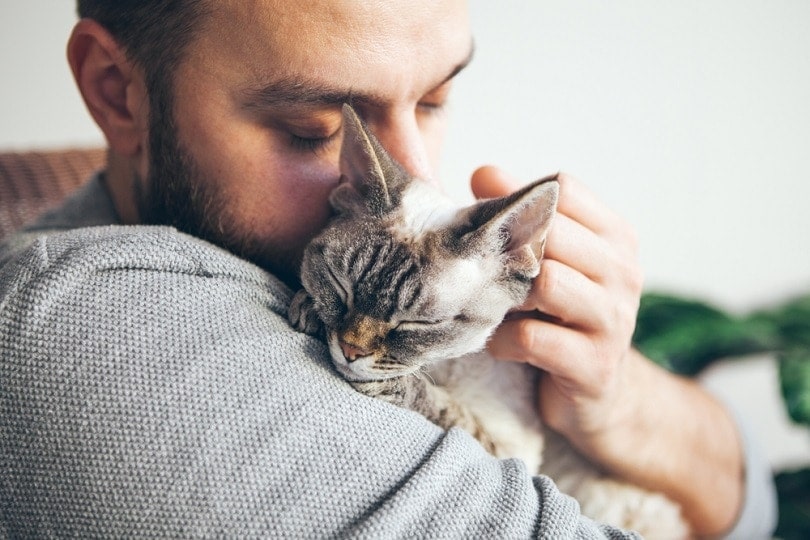How to Teach Your Cat to High-Five in 8 Simple Steps

Updated on
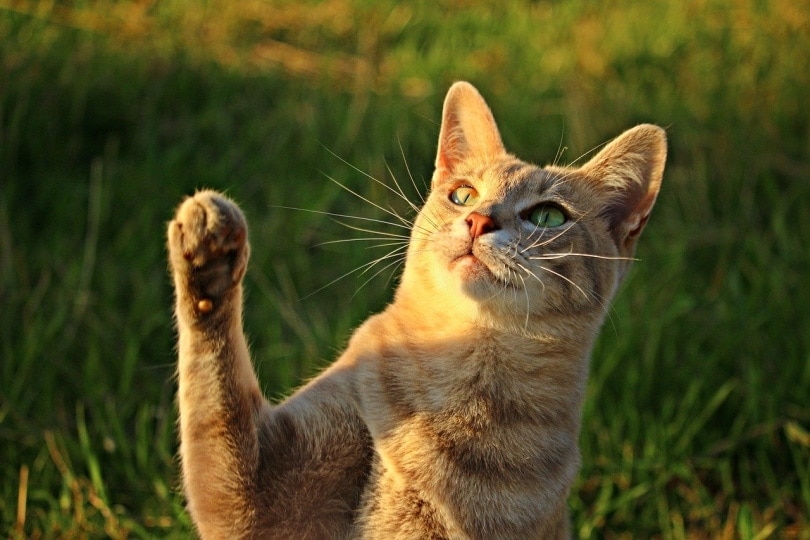
When you think of training pets to do tricks, your first thought is probably of dogs. Cat owners don’t have to miss out on showing off their pets, though. It’s not only possible to teach your cat to high-five — and master other tricks — but it’s also more impressive when you show your friends. Many people simply don’t believe that training a cat is possible.
With time, dedication, and the right training routine, you’ll be wowing your friends in no time. To help you get started, here’s a simple step-by-step guide on how to teach your cat to high-five.
Things to Remember
As with all training attempts, there are several tips to remember if you want to improve your chances of success. Here are a few things to keep in mind before you start.
Know Your Cat
You can use similar tricks to train a cat as you would a dog. However, there is a caveat to this. While cats can be motivated by treat rewards just like dogs, you also have to consider their personality. They might not enjoy the same rewards that your dog does or be happy to spend long sessions on the same trick.
Remember that while cats can be trained, they are also well-known for being much more independent than dogs. This is what you have to account for when you’re training them.
Understanding what makes your cat tick will help you convince them to take part in your high-five training too.
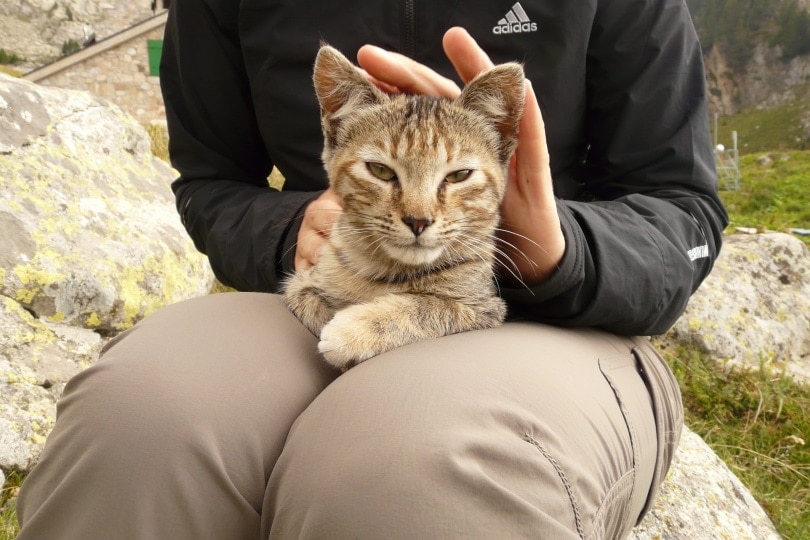
Take Your Time
Training your cat is similar to training a dog, but it’s more likely to take longer. Although it’s tempting to want to see results immediately, you need to be patient, or both you and your cat will end up frustrated. Your cat might even decide that training isn’t interesting enough to partake in, which will only make it more difficult.
Short Sessions
One reason people don’t train their cats is that it takes longer than training a dog. While you do have to put time and effort into teaching tricks to a dog, your cat can be even more stubborn.
Five-minute sessions are best when it comes to training your cat. Even if you’re tempted to keep going, take a step back, and give your favorite feline a bit of time to themselves. The shorter the sessions are, the more likely that it’ll remain fun for both you and your cat, and your feline will be more than happy to pick up the training again later.
The 8 Steps to Teaching Your Cat to High Five
1. Remove Distractions
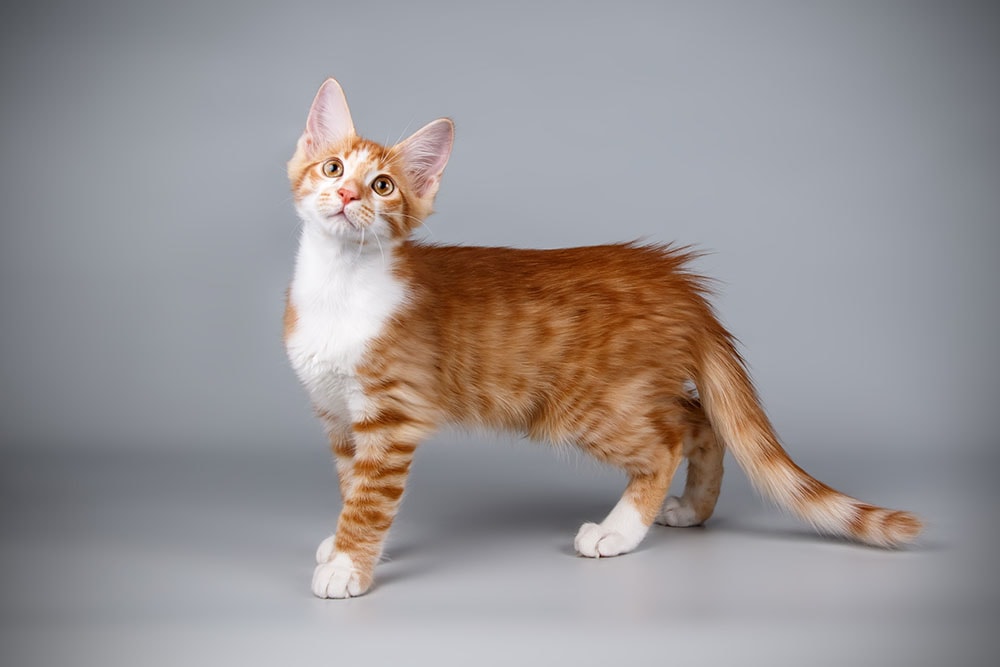
Focus is one of the most important things when it comes to successful training. With their stubborn independence, cats are likely to find something much more interesting than you and your strange desire for a high-five.
Start your training sessions strong by finding a quiet spot with no distractions. You’ll be better able to keep your cat focused on you and avoid any potential mishaps if they get spooked by something. Remember that distractions include other family members, both the two-legged and four-legged kinds.
2. Prepare a Reward
One of the biggest motivators for cats is a good reward. Their favorite treat can work wonders when it comes to encouraging the behavior that you want from them. Since you’ll be keeping the sessions short, you can even take the chance to spoil your cat with fancier treats that they don’t get often.
Grab a small handful to use, but don’t get too many, or you might be tempted to make the training session too long just to use all the treats. Also, remember to choose healthy treat options and consider the cat’s daily calorie limits.
3. Master “Sit”

It’s possible to train a cat to high-five if they’re in a standing position, but mastering the “sit” command first will make it easier for you in the long run. By taking the time to teach your cat “sit”, you’ll be setting them up for success for high-fives and for plenty of other tricks that you might want to teach them later.
If you want to leave “sit” for another time, though, you can always start the training session when your cat is already sitting down.
4. Teach Your Cat to Touch Your Closed Hand
First, teach your cat to touch your hand. You can do this by holding a treat in your closed fist and waiting for your cat to touch your hand with their paw. Remember to show your cat that the treat is in your hand before presenting them with your closed fist. To start, you want to hold your hand low to the ground.
Be patient at this stage. Your cat will likely start by investigating your hand with their nose. You need to wait until they use their paw instead.
As soon as they touch your hand with their paw, praise them with a cheerful “yes” or “good,” and give them the treat. Some cats will only raise their paw a little at first instead of touching your hand; remember to praise them then too.
5. Raise the Height
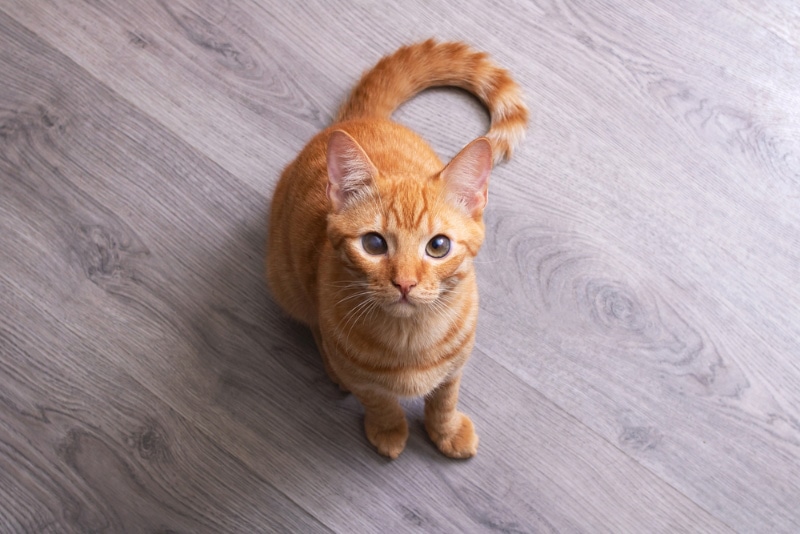
When you first start teaching your cat to high-five, you want to start small. This is why you start with your hand low, to make it easier for your cat to reach. As they get better at touching your hand with their paw, slowly increase the height of your hand until you’re holding it just over their head.
Take this stage slowly and don’t jump to full height immediately. The idea is to get your cat used to reaching for your hand. If they start to struggle or get confused, go back to the height that they were most comfortable with.
6. Progress to Touching an Open Hand
This step can be done before or after raising the height of your hand. Once your cat has mastered touching your closed hand with their paw, you can introduce your open palm. Keep the treats close by, and reward your cat whenever they touch your palm.
Again, take it slow. It might take a while for your cat to realize that you’re asking them to touch your palm rather than your closed fist. Praise, reward, and repeat until your cat is a pro.
7. Introduce a Command

To start with, it can be easy to jump straight into connecting the high-five with the command. It’s best to give your cat one thing to focus on at a time. This is why we’ve left introducing the command until last.
Once your cat knows that you want them to touch your open palm with their paw — and they do it consistently — then you can introduce the command. Stick with something simple, like “high five.”
The idea isn’t to make the command sound cool but to teach your cat to associate the command with the action. Start to say the command every time your cat touches your hand, and then reward them.
8. Repeat
They say that “practice makes perfect,” and the same is true for training cats. Once your cat has all the steps down, repeat the training until you can ask for a high-five and your cat responds consistently.
Don’t let your excitement about your success lead you to push your cat too fast, though. You still want to take this step slowly. Maybe simply request a high-five when you cross paths with your cat in the hallway. They’ll be high-fiving pros in no time at all.
Conclusion
Training a cat isn’t easy but it is possible, and with a bit of dedication, you and your cat can wow all your friends. Not only are training sessions a great way to spend time with your cat, but you can also keep their minds active.
You don’t have to stop once you’ve mastered the high-five either. Once your cat is consistently answering your high-fives, why not challenge them with something new?
See also:
Featured Image Credit: rihaij, Pixabay




